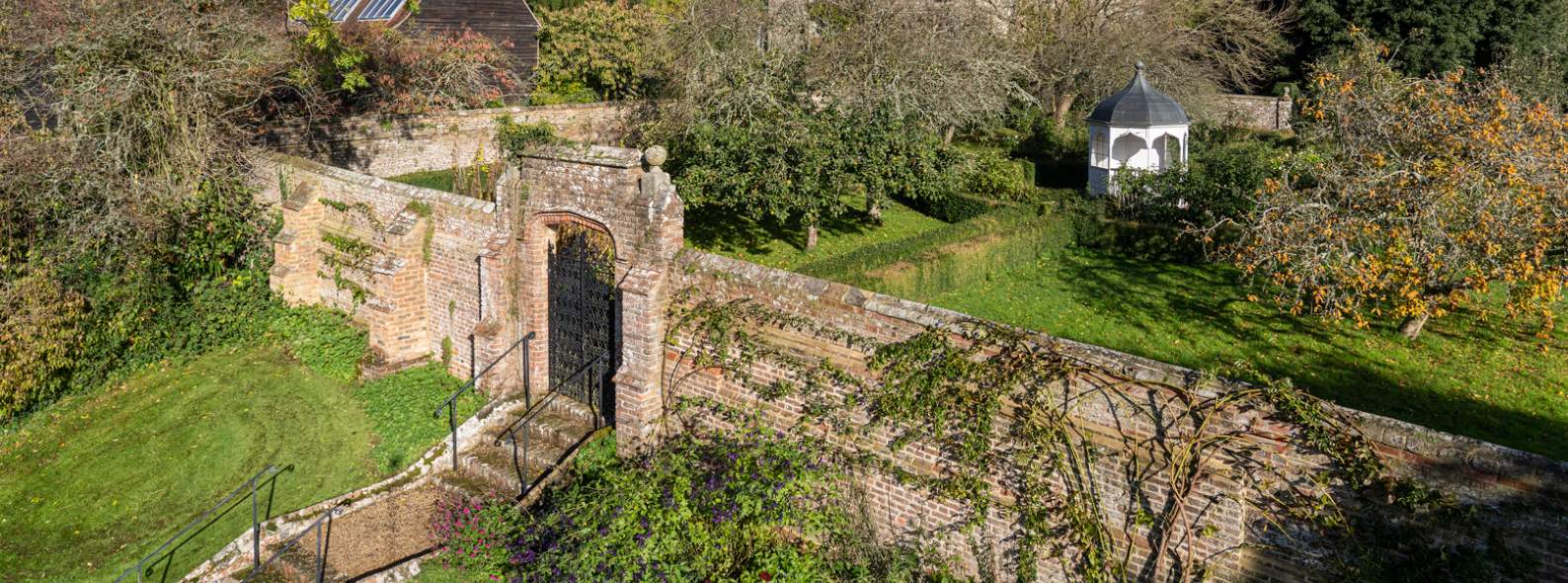From a simple Tudor herb patch to the elaborate examples of the Victorian era, the kitchen garden has played a vital role in the history of the country house and surrounding community for hundreds of years.
Kitchen gardens in the Tudor period were often small, located close to the house and primarily used for growing medicinal herbs, fruit trees, and vegetables. The Tudors believed in the power of herbs to treat all manner of ailments and thus the kitchen garden was treated as a medicine cabinet. During the reign of Elizabeth I, gardening became more fashionable and larger, more elaborate plots were created.
The 17th century saw the rise of the formal garden, with symmetrical designs, geometric shapes, and ornate features such as fountains, statues, and topiary. As knowledge grew, kitchen gardens became larger and more formalised, with walled enclosures and carefully laid out beds to help maintain optimum growing conditions. Produce such as cabbages, peas, beans, and root vegetables were grown, while herbs continued to be a mainstay of the garden.
In the 18th century, the landscaped garden became popular, with its naturalistic designs and sweeping vistas. However, kitchen gardens remained an essential part of the country house estate, providing fresh food for the increasingly sophisticated tastes of the gentry. The walls of the kitchen garden were often heated by flues or hot water pipes to extend the growing season and allow for the cultivation of exotic fruits such as pineapples, melons, and peaches.
Innovation in the 19th century brought new technologies such as glasshouses, allowing for even greater variety in the fruits and vegetables that could be grown. The gardens again became even more elaborate, with ornamental features such as pergolas, summerhouses, and decorative gates. The Victorians were particularly fond of growing flowers and ornamental plants alongside their vegetables, creating a harmonious and aesthetically pleasing effect.
The decline of the country house estate in the 20th century led to the neglect and abandonment of many kitchen gardens. However, in recent years there has been a revival of interest with many being restored to their former glory and now open to the public or used to supply local restaurants with fresh ingredients.
Today, the kitchen garden represents not only an important historical link to the past but also a sustainable and environmentally friendly way of producing food, which is why the Savills garden at this year’s RHS Chelsea Flower Show will showcase the event’s first working kitchen garden, adopting a ‘plot-to-plate’ approach where produce from the garden will be cooked by Michelin-green-starred chef Sam Buckley.
Image: The walled garden at Possingworth Manor, East Sussex



.jpg)
.jpg)
.jpg)

(1).jpg)
(1).jpg)

.jpg)